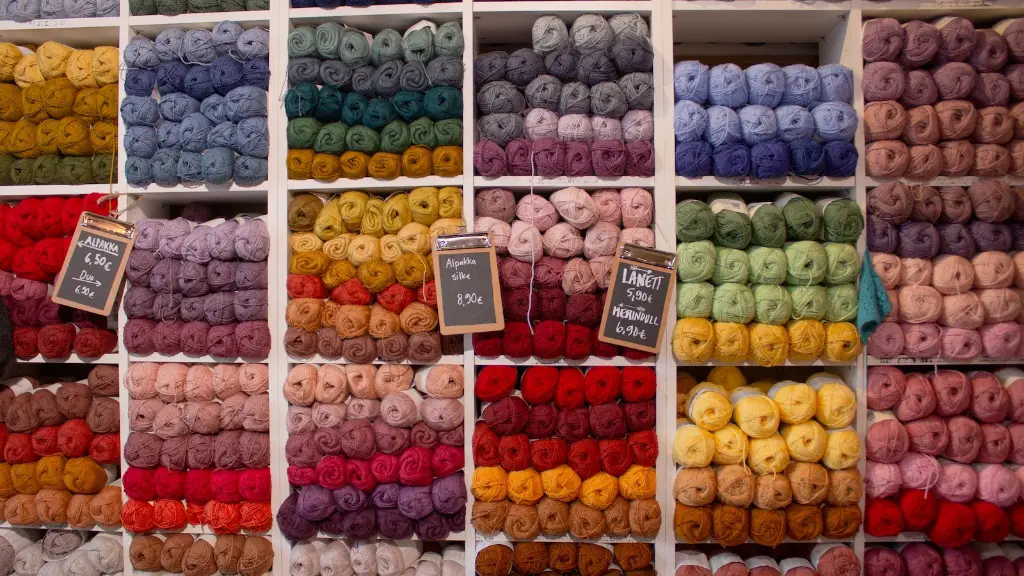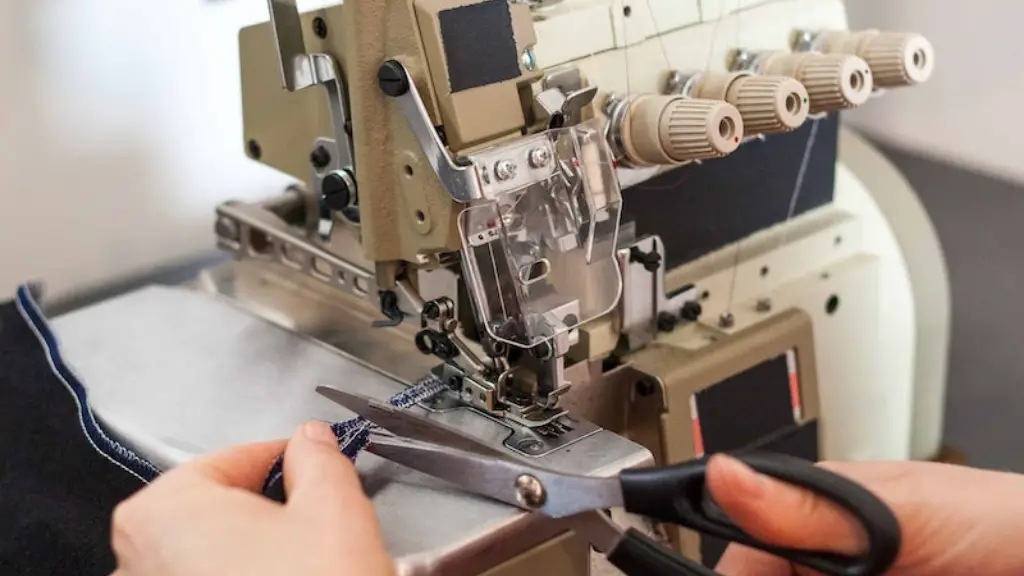There are a few things to consider when finding the right size sewing pattern for you. First, you’ll need to take your measurements. Once you have your measurements, you can compare them to the size chart on the back of the pattern envelope. If you’re in between sizes, you may need to do a little bit of math to figure out which size to make. But don’t worry, we’ll walk you through it!
This will depend on the size of the garment you want to make.
How do I know my sewing pattern size?
1. Measure your body: Bust, waist, and hip are the most important measurements to consider when choosing a sewing pattern.
2. Measure the pattern: Compare your measurements to the finished garment measurements on the pattern envelope.
3. Measure your closet: Choose a pattern size that will fit the garments you already have in your closet.
4. Modify the pattern: If necessary, make adjustments to the pattern to ensure a better fit.
5. Make a muslin: Always make a sample garment (a muslin) before cutting into your fabric. This will allow you to check the fit and make any necessary adjustments.
It is important to remember that standard body measurements vary from one garment manufacturer to another. The measurements used by your favorite ready-to-wear brands may not correspond to other ready-to-wear brands or to the standard body measurements that are used to develop the patterns. This is why it is important to try on clothing from a variety of brands before making a purchase. By trying on clothing from a variety of brands, you will be able to find the brand that fits you the best.
Are pattern sizes the same as ready to wear sizes
It’s important to remember that ready to wear sizes and sewing pattern sizes are not the same systems. Just because you’re used to buying ready to wear in a certain size doesn’t mean that your sewing pattern size will be the same. Always check the size chart on the pattern to find the right size for you.
If you need to figure out how much fabric you need, you can use this formula:
Width of fabric divided by width of one piece equals the number of pieces that fit into width (rounded down to the whole number)
Total number of pieces divided by number of pieces that fit into width equals number of rows you need
Can you mix sewing pattern sizes?
When it comes to making your own clothes, you can use pattern sizes to make parts of the garment bigger or smaller to give you a more custom fit. This is extremely helpful when you can’t find a garment in your size, or if you want to make a small adjustment to a garment to make it fit better. With a little bit of creativity, you can make any garment fit perfectly!
The 45 and 60 on a sewing pattern indicate the width of the fabric. Depending on the fabric mill and content, some fabrics come in 45 inch widths while others are 60 inches wide.
How do I choose my perfect size?
When it comes to shopping for clothes online, one of the most important factors to consider is choosing the right size. There are a few things you can do to make sure you pick the right size, including:
-Measuring yourself, the right way. Make sure you know your measurements before shopping online.
-Taking into account the model’s fit. If you’re unsure about a particular item, look at how it fits the model in the photos.
-Using a retailer’s size guide. Many retailers have size guides available on their website, which can be helpful in picking the right size.
-Actually reading the reviews. See what other people have to say about the fit of the clothing before you buy it.
-Looking at positive and negative reviews. Don’t just focus on the positive reviews – pay attention to the negative ones as well.
-Considering the material used. Some materials are more forgiving than others, so keep that in mind when choosing a size.
-When in doubt, size up. It’s better to be a little too big than too small.
-Staying loyal to a select retailer. Once you find a retailer whose clothing fits you well, stick with them.
To take your own measurements, you will need a measuring tape. You can find these at most craft stores.
Bust: Measure at the fullest point of your bust. Waist: Your waist is the narrowest part of your torso. Hips: You measure your hips at the widest point below your waist. High hip: This is also a hip measurement but taken in a different place than the previous one.
What is perfect figure size
The so-called “ideal” body proportions for women have been in existence for many decades now, with the earliest mention of them dating back to the 1960s. These proportions, which are typically measured as 36-24-36 inches (90-60-90 centimeters), are commonly known as the “hourglass” body type. While many women aspire to have this body type, it is important to remember that everyone is unique and that there is no one “ideal” body type for all women.
This is important to keep in mind when shopping for clothing, especially if you’re shopping online. It’s always better to err on the side of caution and go with a size that’s a little bit bigger than what you normally wear. That way, you can be sure the piece will fit comfortably and won’t be too tight.
What size should I order in between sizes?
Choose the medium size if you’re struggling between a size small and a medium. It’s not that you won’t lose weight or eventually fit into the smaller size, but the larger size is the better investment. Remember, it’s easier to take something in than it is to take something out.
When choosing a print for your clothing, it is important to keep in mind how the print can affect the perceived volume of your body. Large prints and horizontal strips tend to increase volume, while small prints and vertical stripes tend to decrease volume. Wearing a print that is slimming can help you to feel more confident and look your best.
What are four 4 factors you should consider when picking a pattern
When choosing a pattern, you should consider a few different factors. First, you want to make sure that your sewing skill matches the pattern’s level of complexity. You don’t want to choose a pattern that is too difficult for you to sew. Second, you want to choose a pattern that will fill a need in your wardrobe. Choose a design that you feel you need in your wardrobe. Lastly, you want to choose a design that will flatter your body shape. Choose a design that you feel will look good on you and that will make you feel good about yourself.
Things like the grain line make sure your fabric is in the right Position things like cutting on the fold and bias can help your project turn out more professional looking
How do you layout pattern pieces on fabric?
Be sure you have all the necessary pattern pieces before you begin. It’s also important to spread out the fabric carefully to avoid any unwanted creases or wrinkles.
When it comes to cutting the fabric, you have two main layout options:
With-nap layout: This is where you fold the fabric lengthwise with the nap (i.e. the fabric’s grain) running down the middle.
Without-nap layout: Here, you fold the fabric crosswise so that the nap is running across the width of the fabric.
Once you’ve decided on a layout, it’s time to anchor the pattern to the fabric. This is usually done by placing the pattern’s grainline on the straight of grain (i.e. the lengthwise or crosswise grain).
When you are grading between sizes on a pattern, you will need to make sure that you make the same changes on all pattern pieces. First, you will need to find the notches at the different points on the pattern where you need to make changes. Then, you will need to draw a line between the notches. Make sure that the seams still line up after you have made the changes.
How should you choose a pattern if your measurements fall between two sizes shown
If your measurements are in between two sizes, you can choose the smaller one for a slimmer fit or the larger one for more ease. Compare your Waist and Hips measurements to the chart. If they fall into the same size as your Bust, continue on with that size.
Sewing can be a daunting task for beginners, but with the right pattern it can be a fun and rewarding experience. Here are five great patterns for beginners that will help you get started on the right foot.
1. Tilly and the Buttons – Cleo. This pattern is great for beginners because the instructions are easy to follow. The finished product is also a great wardrobe staple.
2. Grainline Studios – Scout Tee. This pattern is a great choice for beginners because it is a quick and simple sew. The tee is also a versatile piece that can be dressed up or down.
3. Leisl & Co – Everyday Skirt. This pattern is perfect for beginners because it is well-drafted and produces a wardrobe staple. The skirt is also incredibly comfortable and can be dressed up or down.
4. Tilly And The Buttons – Coco. This pattern is perfect for beginners because it is easy to follow and produces a beautiful, timeless garment.
5. Sew Over It – The Ultimate Shift Dress. This pattern is perfect for beginners because it is quick to sew and produces a flattering and stylish dress.
Conclusion
There is no definitive answer to this question as it will depend on a number of factors, including the size of the person you are sewing for, the type of garment you are sewing, and the fit you are aiming for. With that said, it is generally a good idea to select a pattern that is two to four inches larger than the person’s actual body measurements.
There is no definitive answer to this question as everyone is different in size and shape. However, there are some general tips and guidelines that can help you choose the right size sewing pattern. First, take your measurements and then compare them to the sizing chart on the pattern envelope. If you are in between sizes, it is usually best to go with the larger size. You can always make adjustments to the pattern if it is too big, but it is much more difficult to make a pattern larger. Secondly, think about the style of the garment and how it will fit your body. Looser fitting garments can usually be made in a smaller size, but more fitted garments will require a closer fit and may need to be made in a larger size. Finally, pay attention to the finished measurements on the pattern and choose a size that will give you the desired finished garment. With a little trial and error, you will eventually find the perfect size sewing pattern for you.





